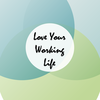|
It happens to everyone. Out of the blue something takes place (or maybe you saw it coming) and you are triggered, bringing up feelings of anger (or one if it’s “cousins”; frustration, exasperation, irritation, dissatisfaction, etc.). This is the “anger bus” and once on it, there are limited opportunities to get off (it’s a fast moving bus). When anger happens at work it can be incredibly difficult to sort through the flood of body responses (tense muscles, facial expression, increasing heart rate, etc.) and the mental chatter (“NO! You can’t do that to me!” …your favourite expletive here…). It’s a challenge that arises unwelcomed in our day, and even if we anticipate that something may make us angry, our feelings of vulnerability can be made worse by our own failure to be unaffected by our anger. Consider this - anger is not an emotion we have a choice in receiving, it’s just going to happen (whether we see it coming or not) so be deeply compassionate with yourself in your anger and know it’s what you do with that anger that counts and shortens this agonizing “bus trip”.
The first step is admitting to yourself that you are angry – this takes some practice. Depending on the circumstance, you may let that anger rip lose and alert those around you to the fact that you are angry (possibly alerting yourself as well). You may deny you are angry (“Oh no! I can’t be angry…that feeling is not allowed!”) and then have it wreck havoc within you, making you feel a whole series of other emotions you’d rather not feel (shame, sadness, vulnerability, fear, anxiety, etc.); or you end up somewhere in between (remember, you didn’t choose to get on this particular bus, but you are there now). Recognizing that you are angry is the first step to being able to do something constructive with it; but it takes practice to be able to build for yourself a reliable signal (like the indicator button you find on buses) that says “this is my stop, I will be getting off soon”. This step requires that you intentionally name your emotion (I am angry) as soon as you recognize it. Learning to do this for yourself is worth pursuing, being able to name this emotion is incredibly freeing (just like being able to signal when you want to get off a bus is freeing). Naming it gives you choice; not acknowledging how you really feel robs you of that opportunity (one only we have the power to give ourselves). When you are angered it is the way you act on those emotions that will dictate both how you feel about yourself and how others experience you on this ride. There are really only two options, to respond or to react. In a situation where you are choice-less about feeling something unwelcome (like anger or it’s “cousins”) reacting is an incredibly human thing to do. This happens when we are not aware of our emotions; we are hopped up on adrenaline and unmet expectations (a potent combination). Examples include being verbally un-thoughtful or becoming silent and withdrawn. Rarely do you feel good about how you handled something when you’ve reacted to it. However, the “anger bus” puts us in a place where we have to make a decision about what we do next – hit that signal button or stay on for the whole route. If you are able to give yourself the few moments you need to acknowledge that you are angry it provides the choice needed, and it is the only way to get off this particular bus. In response mode you can ask for more time (to process your feelings), you can let someone know you are feeling angry and calmly introduce them to your concerns, you can be more objective about why the other person may be behaving in this unwelcomed way and quickly clear up a misunderstanding. But these options only exist when you help yourself to identify this emotion. Reaction or response, the choice is always (and only) yours. Everyone has hung on to anger long after the initiating event has passed, or perhaps you didn’t realize you were angry about something, suddenly becoming aware of it; anger can manifest in a variety of ways (slow burn or quick flash) and for a variety of reasons. When something has made you angry, whether you liked how you handled it or not, you are still faced with yet one more decision before you are truly able to disembark this bus; do I hang on to my anger or do I let it go (the anger bus has stopped, do I get off)? Often if the issue has been resolved through responsiveness (a misunderstanding cleared up, or compassion and objectivity applied) it is easier to let anger go and not have it impact you now or in the future (off the bus you go). Reactions on the other hand tend to perpetuate anger and further conflict, which leads to bitterness. When left unaddressed anger turns into resentment, which in turn distances us from our ability to experience joy and happiness at work, or in many other places in our life. There is a great quote that sums this up nicely: “Resentment is like taking poison and waiting for the other person to die.” (Malachy McCourt, 1998). In letting go of your anger, being able to become more objective about what happened, or being more compassionate (with yourself and with others) you will find your way off the anger bus and future trips will be shorter and less destructive to your well being. Put another way: “Pain is inevitable, suffering is optional” (Anonymous). This blog was inspired by Rabbi and Psychiatrist, Dr. Abraham Twerski and his identification of the three phases of anger – it is a great resource for anyone looking to get off the “anger bus” with grace and courage. https://www.youtube.com/watch?v=hdj9MBZBLGU Comments are closed.
|
|
|

